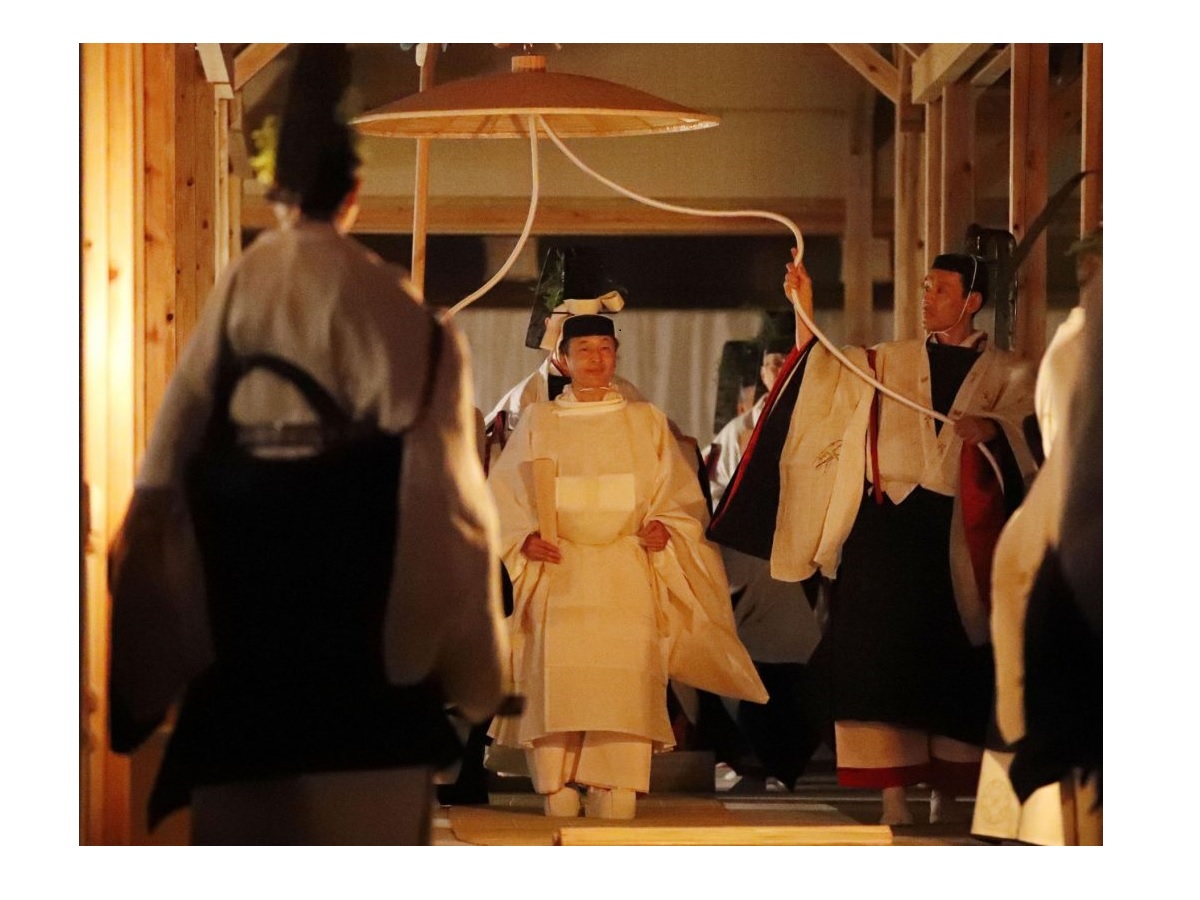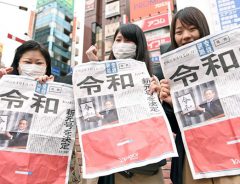
Source: © JAPAN Forward
Emperor Naruhito Performs the ‘Daijosai,’ the Imperial Ascension’s Last Major Ceremony
- Source:
- © JAPAN Forward
- Tags:
- Daijosai / Emperor Naruhito / imperial enthronement / Reiwa Era
Related Article
-

Japanese Businesses Rush To Capitalize On Era Name Announcement With Reiwa Items
-

Zespri’s Retro-Kawaii Kiwi Jingle Suggests “Agelicious” As First Buzzword Of Reiwa Era
-

‘Beautiful Harmony’: Japan Releases Official Translation of ‘Reiwa’ After Mixed Reactions to New Era Name
-

Viral Crowdfunding Hit Yuru-Hakama Roomwear is Back for the Reiwa Era


By Arielle Busetto, JAPAN Forward
Emperor Naruhito carried out the most traditional and important of the rituals to becoming emperor of Japan, the Daijosai, starting from the evening of Thursday, November 14.
The Great Thanksgiving Festival was expected to last through to the early hours of the morning Friday, November 15.
The special ritual takes place only once during an emperor’s reign, where the new emperor thanks the divinity Amaterasu for the harvest with offerings, partakes in the meal, and prays for the wellbeing of his people.
Foreign media might have already led some to believe that this is an occult ritual, judging from the headlines.
To shed light on the tradition, we sat down with Yorio Fujimoto, professor of Shinto Studies at Kokugakuin University in Tokyo, to find out more about what actually happens during the ceremony. We wanted to know how to interpret it from an outsider’s perspective, and what is the deeper meaning of the ritual.
© JAPAN Forward
Last Enthronement Ritual
The Daijosai is the last of the three main rituals that an emperor performs to take the Chrysanthemum throne: Kenjito Shokei no Gi, Sokui no Gi, and the Daijosai.
First, on May 1, Naruhito received the three imperial regalia, which were passed down from his father Akihito.
Then, on October 22, in the Sokui no Gi, he officially declared his status as emperor in front of politicians and dignitaries from Japan and more than 180 countries.
Finally, there is the Daijosai. This ceremony is unique to Japan and is a special occasion that only happens once in an era.
“The enthronement in some ways is a ceremony that fits the global standard, meaning that it typically takes place in all countries where there is a monarch. The Daijosai is a ceremony which is original to Japan, which needs to be performed because Naruhito is emperor of Japan,” Professor Fujimoto explained.
(...)
Written by Japan ForwardThe continuation of this article can be read on the "Japan Forward" site.
Emperor Naruhito Performs the ‘Daijosai,’ the Imperial Ascension’s Last Major Ceremony